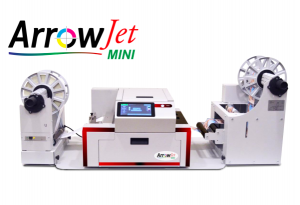The Food Packaging Industry:
Overall leaving all marketing and promotional opportunities our packaging has, the packaging you choose is meant to protect your product. The packaging machinery industry alone focuses on labeling and packaging profiting nearly $450 million in 2020, just in the United States alone.
This is due to the improved downstream demand that has allowed this niche industry to grow slowly over the last 5 years. The 3 biggest components that comprise this industry are food and beverage, household goods and pharmaceutical packaging. These 3 segments alone make up almost 2/3rds of the industry but the food and beverage packaging industry alone accounts for 50.3% and is the largest of the packaging machinery’s downstream market (quoted from IBISWorld).
With such a large market, your packaging is far more important than it would appear. Faulty packaging, normal shrinkage and wear are normal but your products are still liable to contamination during transportation or migration.
Regulations on Your Packaging:
Your packaging is made of over 5 different layers and components ranging from the outer layer to the inks used to print that eye-catching design. The reasoning behind the many layers is to ensure the product inside is protected from the outside world and everything they experience while being moved from production to your pantry.
The FDA has recognized food additives as “any substance the intended use of which results or may reasonably be expected to result, directly or indirectly, in its becoming a component or otherwise affecting the characteristics of any food.” While lengthy, these food additives are deemed safe for use in food contact substances.
The 3 ways your product may experience compromised safety are in the form of migration where ink components pass through their substrates and onto the product, invisible set off where ink-printed sides are transferred to the food-facing side during printing, and the gas phase transfer where inks interact with the air inside the packaging. All of these are risks for the safety of your products specifically.
How do we combat these? Your ink choice is actually very important to food safety and food packaging. When printing for food specifically, inkjet inks are a very safe, sustainable option.
Water-Based Inks: The Solution To Food Packaging?
Eco-Friendly, water-based inkjet ink is safe, high-quality, sustainable, and flexible. Because they are food safe vs food grade, they are able to be printed directly onto the packaging without the need for additional material. This makes them not only efficient but also an environmentally-conscious option for your inkjet printing.
Memjet technology has innovated the packaging industry with the introduction of water resistant, aqueous pigmented inks. They offer a team comprised of specialists in printhead engineering to bring the best possible quality of inkjet printers to your business.
The types of ink Memjet provides are superior to its competitors. For food packaging, they’ve introduced a full line of water-based inks that are not only safe for you but the environment as well in comparison to standard dye based inks. These carefully designed Memjet inks ensure consistency, quality, and sustainability for all your printing technology.

Check out Arrow Systems line of ArrowJet Mini and Aqua 330R and see how Memjet’s water-based technology may be beneficial to your business. With the high production capacity of ArrowJet Aqua and the tabletop versatility of ArrowJet Mini, These label printers combined with Memjet’s DuraFlex technology, your business can rest assured that your prints will be vibrant, quality, and durable enough to withstand anything your business throws at them.
